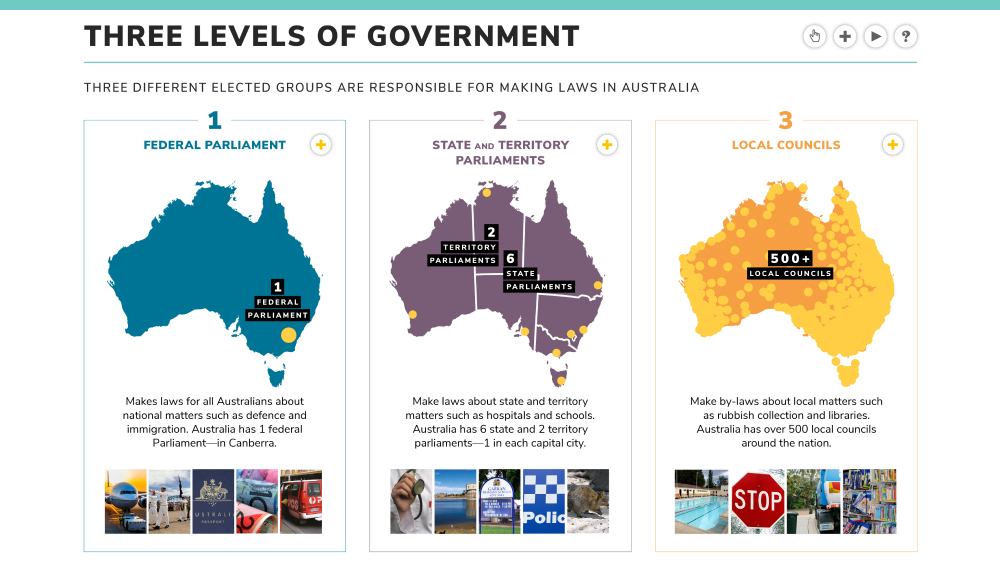Three levels of government
Explore Australia’s three levels of government with your class with this interactive poster. Use the teaching notes and activities to support your students' learning.
Teaching notes and activities
Curriculum alignment
Year 4 AC9HS4K08
Year 6 AC9HS6K07
Year 7 AC9HC7K01
Year 9 AC9HC9K02
Before you begin
Read through the Three levels of government: governing Australia in focus paper to learn how the three levels of government work together to provide us with the services we need. It explores the roles and responsibilities of each level, including how they raise money. Case studies show how the powers of the Australian Parliament have expanded.
Getting started
These discussion starters are listed from easier to more complex. Choose the ones that work best for your class.
- What are the three levels of government called?
- What is each level responsible for?
- Look at the pictures showing the responsibilities of the federal Parliament. What experience have you had with any of these services?
- Look at the pictures showing the responsibilities of the state and territory parliaments. Why do you think police, water resources and schools are managed at a state and territory level, instead of a local or federal level?
- Sometimes local, state and territory, and federal responsibilities overlap. For example, imagine the next Olympics will be held in Perth. Look at the pictures on the interactive poster. How could each level of government be involved in this event?
Activities
Mapping the three levels of government activity
- On a map of Australia locate and mark where the following meet:
- federal Parliament
- your state or territory parliament
- your local council.
- Students select 3 coloured pencils to work with. They can decide which colour represents which level
of government. - Students each draw a picture of an Australian community. Brainstorm a list of what their picture could
include. For example, a post office, mobile phone towers, garbage truck, police station, library, bus stop,
an ambulance, an airport and a school. - Students use their pencils to colour code the people and places they have drawn as federal, state and
territory, or local. Students then look at each other’s papers and guess which colours represent which
level of government.
Three levels of government research activity
Research the Tasmanian Dam Case as an example of a conflict between the federal government and a state
government. Ask students to find out:
- What did the Tasmanian Government want and why?
- What did the federal government want and why?
- How did the High Court resolve the issue? Why was their decision important?
Reflection
After looking at the interactive poster and completing some of the activities, discuss this question with
your class:
- The federal Parliament and the state parliaments share some responsibilities. If our federal Parliament and a state parliament pass conflicting laws on the same issue, the federal Parliament’s law overrides the state law. Why do you think this rule was included in the Constitution? Do you think it is fair? Why/why not?
